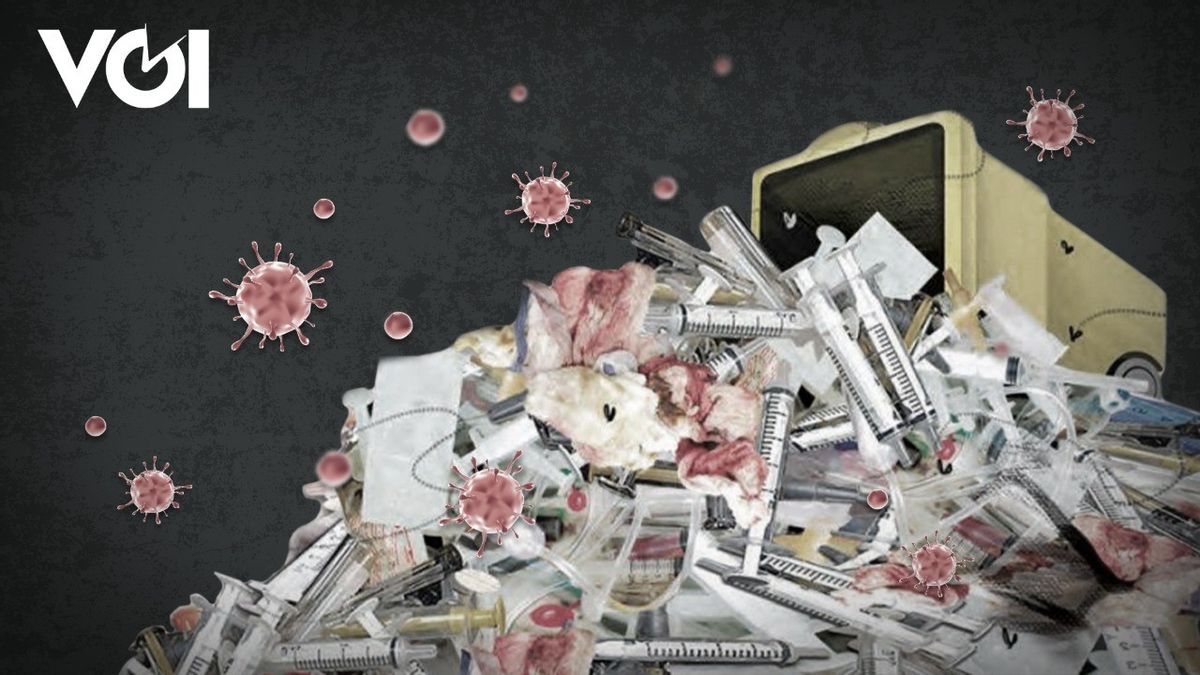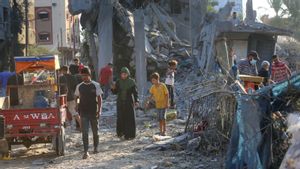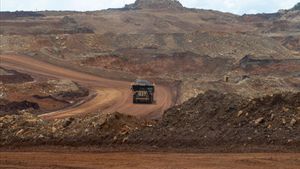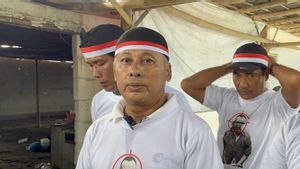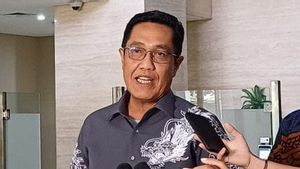Welcome back to VOI's signature Series. In a week, we will explore various issues regarding infectious medical waste. The premiere article of "Critical Medical Waste" exposed the dangers of improperly disposed infectious medical waste. The threat is not only to humans, but also to the environment.
Pagebluk COVID-19 makes thousands of health workers obliged to replace masks, personal protective equipment (PPE), routine gloves every day. Automatically, infectious medical waste or hazardous and toxic materials (B3) is booming. This is a new problem in the handling of pagebluk: rampant disposing of medical waste carelessly. If it is not taken care of immediately, calamities will come not only to humans, but also to the environment.
On February 5, medical waste suspected to have been handled by COVID-19 was found scattered in the Oil Palm Plantation area of PT Perkebunan Nusantara (PTPN) VIII, Cigudeg District, Bogor Regency, West Java. The medical waste found was a hazmat suit, masks, syringes, intravenous lines and a number of packages or bottles of used medicine.
This is not the first case. The day before, there was a similar discovery on the side of Jalan Raya, Tenjo District, Bogor Regency. This hazardous waste is deliberately dumped in the area. In fact, waste like this, especially for handling COVID-19, should not be disposed of carelessly.
In addition, researchers from LIPI, IPB and UT found PPE mask waste polluting the mouth of the Marunda and Cilincing rivers towards Jakarta Bay. The PPE includes medical masks, gloves, hazmat, raincoats and face shields.
"Based on the data provided, it can be concluded that the PPE waste has increased significantly," said the COVID-19 Task Force's Medical Waste Management Sub-Division in a written statement, quoted by Tempo.
The discovery of medical waste that was dumped in any place also occurred in November 2020. Trash that is suspected of being formerly tested for COVID-19 was dumped by the side of the road in Bekasi Regency, West Java. The goods were found by residents on the side of Jalan Raya Sukatani-Cabangungin, Bekasi Regency. The case is still being investigated by the Bekasi Metro Police and the Bekasi District Environment Agency.
Medical waste was also found polluting the Cisadane River. The poisonous goods were caught in a floating bridge in the Cisadane River Garbage Bank (Banksasuci) area, Tangerang City. Medical waste has started filling up the Cisadane River in Banksasuci since the landslide of the Cipeucang landfill (TPA) in South Tangerang in June 2020.
It is illegal to dispose of medical waste carelessly, even though the number of used medical support devices has increased by 30 to 50 percent. As quoted by Antara, the Ministry of Environment and Forestry (KLHK) stated that since the beginning of the COVID-19 pandemic entering Indonesia in March 2020 to February 2021, there have been 6,417.95 tons of COVID-19 medical waste.
This medical waste is included in the category of Hazardous and Toxic Material (B3) waste. DKI Jakarta is the area with the most heaped medical waste, namely 4,630.86 tonnes. So how dangerous is this infectious waste?

Officers remove bags containing community mask waste from a truck belonging to the DKI Jakarta Environment Agency (DLH) (Photo: Antara)
Before looking at the dangers, we need to know what infectious waste or B3 waste is. In the Ministry of Health's hazardous waste management guidelines, items that include B3 waste are used masks, used gloves, used bandages, used tissue, plastic used for drinks and food, used food and beverage paper, used syringes, used infusion sets, PPE used, patient food leftovers, and items originating from emergency services, isolation areas, ICU rooms and treatment rooms.
Not only in health care facilities, households or other facilities in the community that carry out independent isolation, it produces B3 waste. Such waste can be a source of spread of disease both to officers, patients, or the community around the hospital environment or is infectious. This is because there are pathogenic organisms in sufficient numbers and virulence to transmit disease to susceptible humans.
For example, hazardous waste originating from household activities, such as used air fresheners, laundry detergent and clothes bleach. During this pandemic, household B3 waste increased, namely disposable masks.
Meanwhile, the dangers arising from this infectious waste can be direct or indirect. There is concern that this waste will be a source of disease transmission. Moreover, research from the New England Journal of Medicine shows that the corona virus can survive on cardboard surfaces for 24 hours.

The management of B3 waste is not arbitrary. Everything is regulated in the Decree of the Ministry of the Republic of Indonesia Number HK.01.07 / Menkes / 537/2020.
The regulation explains how to treat B3 waste both liquid and solid. The regulations also explain where to dispose of waste and how to treat it. Not only processing and disposal, protection for officers who collect the waste must also be maintained considering that the treated waste is infectious.
But has it been implemented? The Corruption Eradication Commission criticized the waste processing in DKI Jakarta. The KPK said that medical waste sorting was not in accordance with the standards in DKI Jakarta. Even medical waste is mixed with other wastes.
"The selection of medical waste is not correct. So there are 'colors' according to the standard, but the waste is not applied as if it was just mixed," said Head of the KPK Prevention Task Force Dian Patria in a virtual discussion entitled' More Waste, More Waste. ', on Wednesday 11 November 2020.
Quoting Tempo, in December 2020, there were medical waste classified as B3 waste from around 182 Health Service Facilities in DKI Jakarta. The data comes from 73 hospitals that handle COVID-19 and 109 non-COVID-19 units.
After the waste has been collected by the Environmental Agency, the medical waste will be managed by a third party in collaboration with the DKI Jakarta Environment Agency regarding medical waste treatment.
"With the existence of a systematic system for handling medical waste, it is hoped that it will not cause new problems for the environment," said DKI Jakarta Environmental Agency public relations officer Yogi Ikhwan on Saturday, December 5, 2020.

The treatment of medical waste by health facilities is still a homework for the Indonesian government. When contacted by VOI, the Executive Director of Walhi Jakarta, Tubagus Soleh Ahmadi, said that there are several reasons why medical waste is still being disposed of carelessly.
The first is from its own health facility. When building a health facility it may not be accompanied by a plan for how to treat waste. Or it could be that the waste treatment plan has been prepared but it has not been implemented.
"Usually the person who builds the health facility is certain that the waste treatment method has been attached, whether it is processed independently or by another party. Another party means a third party, for example it can be processed at the nearest hospital," said Tubagus.
Second, the lack of government supervision, is also considered to be a factor in the lack of medical waste treatment. Looking at the case of laying out medical waste in the Cisadane River, shows that the lack of supervision has resulted in the disposal of medical waste in the river.
Not only humans, this waste is also dangerous for the environment. If disposed of arbitrarily, the waste will pollute various areas such as rivers or soil. In addition, there is also the possibility of violations that could occur such as illegal recycling of PPE or masks by irresponsible people.
Tubagus said, actually the Ministry of Environment and Forestry has issued an appeal to the public if the waste used for independent isolation is treated like B3 waste. Meanwhile, for medical waste from households, boxes or boxes for mask waste are provided, which are provided in public spaces. However, the public has not heeded the appeal.
The English, Chinese, Japanese, Arabic, and French versions are automatically generated by the AI. So there may still be inaccuracies in translating, please always see Indonesian as our main language. (system supported by DigitalSiber.id)
